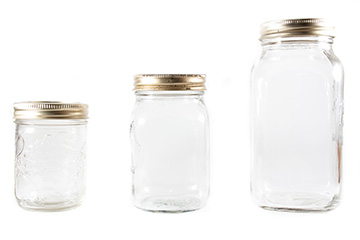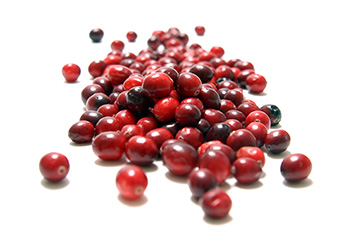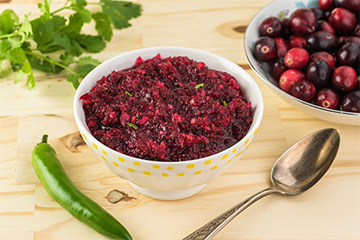
One Jar Size Does Not Fit All

During food preservation classes, participants often say something like: “My family eats so much salsa, I can it in quart jars.” But there are no canning recommendations for preserving salsa in quart jars, only recommendations for pint-jar canning.
Is this a problem? Yes, it can be.
There are a variety of jar sizes available for home canners to use, ranging from 4 ounces up to half gallons. Some jar sizes are not appropriate for canning certain foods — for example, you should not can jelly or jam products in quart jars. The jar size can dictate how a food heats inside that jar. And unfortunately, there is no magic formula for changing process times to suit different jar sizes.
When recipes are tested for canning, the process includes heat penetration studies. These studies track the heat progression in the center — or cold spot — of the jar. The cold spot is affected by the type, acidity and consistency of the food, the size of food pieces, its nutrient content, whether the food is hot or raw packed and many other factors. Learn more about the science behind developing recipes for home-canned foods at the National Center for Home Food Preservation (NCHFP).
Canning recipes reflect the results of that research. So when a recipe calls for using half-pint or pint jars, you cannot use jars larger than a pint; the food, typically canned in that quantity, has not been tested in larger jars. No formula exists for adapting a recipe to a larger jar.
However, you can in general safely use jars smaller than the largest jar listed. For example, if a recipe only lists pints, you have the option of using half-pint or 12-ounce jars. The processing time is still the same as for the pint jar. Keep in mind that using too small of a jar may reduce the quality of a food.
While it may seem limiting to narrow down jar choices, the bottom line is it allows you to produce home-canned foods that you and your family can safely enjoy.
Notes: See “Jar Size Choices Have You Frustrated?” on the NCHFP site for more information on jar sizes.
To learn about the various jar sizes available and which foods are canned in each size, see “Take the Guesswork out of Jar Selection” at the Ball food preservation website.
Cranberries and the Holidays

Cranberries are a common side dish at many holiday tables. The deep-red gelatinous mass is often a “love it or hate it” item, with not much middle ground. If your opinion is based on the commercially canned version of cranberry sauces, perhaps it’s time to broaden your perspective on this tart, vitamin C-rich fruit.
Because of the tartness of cranberries, a large amount of sugar is used in commercially prepared cranberry sauce. You can avoid that sugar intake by buying fresh cranberries to make your own cranberry salsa or other sauce.
The cranberry salsa recipe in this newsletter makes a great accompaniment to chicken or turkey. It also is tasty mixed with cream cheese for a festive dip to serve with crackers or vegetables.
Cranberry Salsa

Ingredients:
- 6 cups chopped red onion
- 4 finely chopped large serrano peppers
- 1½ cups water
- 1½ cups cider vinegar (5% acidity)
- 1 tablespoon canning salt
- 11/3 cups sugar
- 6 tablespoons clover honey
- 12 cups (2¾ pounds) fresh whole cranberries, rinsed
Note: Wear gloves or wash hands thoroughly with soap and water before touching your face or eyes while handling and cutting hot peppers.
Instructions:
- Wash canning jars and rings; keep hot until ready to use. Prepare lids according to manufacturer’s directions.
- Combine all ingredients, except cranberries, in a large Dutch oven. Bring to a boil over high heat; reduce heat slightly and boil gently for 5 minutes. Add cranberries, reduce heat slightly and simmer mixture for 20 minutes, stirring occasionally to prevent scorching.
- Add the hot mixture to clean, hot pint jars, leaving ¼ inch of headspace. Remove air bubbles and adjust headspace if necessary. Wipe rims of jars with damp paper towel and apply two-piece metal canning lids.
- Process in a boiling water canner for 10 minutes, or for 15 minutes at altitudes of 1,000 – 6,000 feet. Let cool undisturbed for 12 to 24 hours, and check seals.
Nutrition information per serving (¼ cup)
Calories: 43; Fat: 0g; Fiber: 1g ; Carbohydrates: 10g ; Sugar: 8.5g
Source:
National Center for Home Food Preservation. 2015. “Preparing and Canning Pickled Vegetables: Spicy Cranberry Salsa.” https://nchfp.uga.edu/how/can_06/spicy_cranberry_salsa.html.